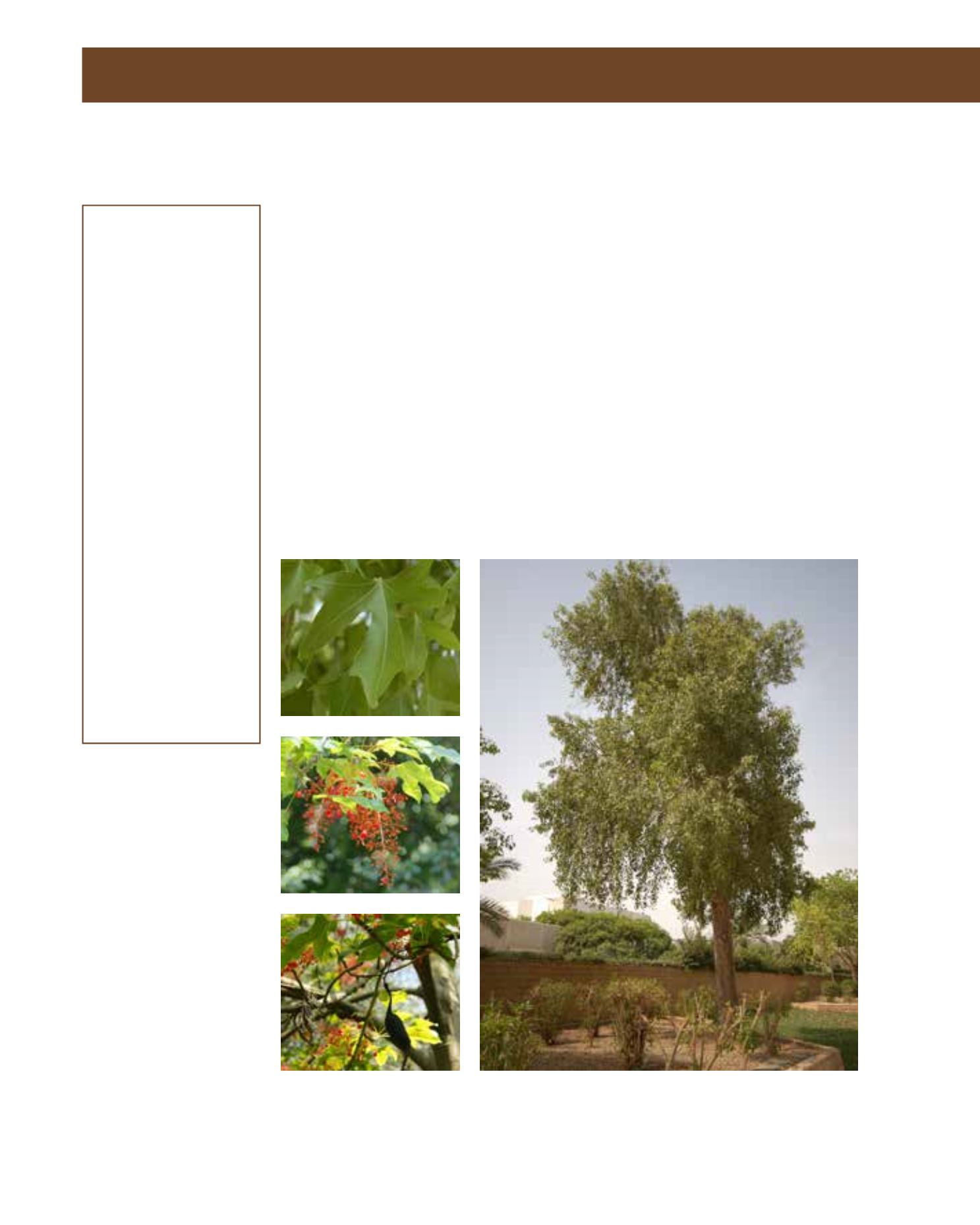

GENERAL
Origin
:
sub-Mediterranean,
Mediterranean,
sub-tropical,
tropical
Vigour
:
slow-growing
Humidity
:
semi-arid, semi-
humid
Propagation :
sowing and
pricking out
Maintenance :
moderate
CONDITIONS
Urban climate :
resistant
Dessication :
vulnerable
Stagnant water :
vulnerable
Irrigation
:
medium
Salinity/ppm :
moderate (2000
ppm)
Hardiness
:
-3°C
SHAPE
Type
:
tree
Height
:
10 m-12 m
Spread
:
7 m-8 m
Foliage
:
semi-evergreen
FLOWER
Colour
:
red
Size
:
2 cm - 3 cm
Period
:
March - May
FRUIT
Type of fruit :
capsule
Fruit size
:
4 cm
Australian Flame Trees have maple-like, semi-evergreen foliage. Showy red flowers appear in
spring when the branches are still bare. Like flames, the flowers attract the eye immediately. They
are small but numerous, bell-shaped and grouped on branched, red stalks. They are worth wai-
ting for, since trees do not bloom so spectacularly until they are 20 years old. Both flowering and
durability of the leaves can vary from year to year, presumably depending on climatic conditions.
The Australian Flame Tree is native to Queensland and New South Wales, where it grows to a
height of about 36 metres. In Arriyadh, it usually does not exceed 12 metres high and about 8
metres across, where it requires shelter from hot, desiccating, strong winds. The straight trunk
is covered in green bark that turns light grey with age. Young leaves emerge in pink and turn
green as they mature. In late summer, boat-shaped fruits ripen and release edible, yellow seeds.
Australian Flame Trees thrive in full sun and deep, fertile soil, which should be low in salt. The
root zone should be soaked thoroughly every month during the summer. Drainage is important
and some humus should be added, if the ground is alkaline. Phosphorus is important and irriga-
tion should be stopped in winter to induce flowering. Popular in parks, it creates pleasant shade
for pedestrians. Young plants should be protected from frost. Established trees simply shed their
foliage in cold weather without any further damage. A central leader should be encouraged by
removing lower branches.
71
Brachychiton acerifolius,
Sterculiaceae
Australian Flame Tree,
Flame Kurrajong
















